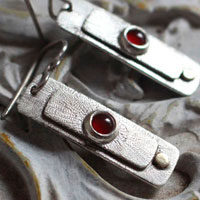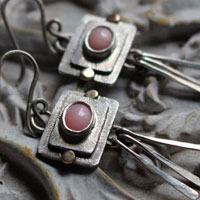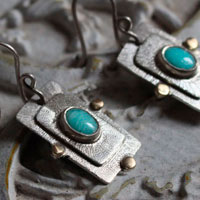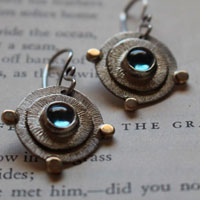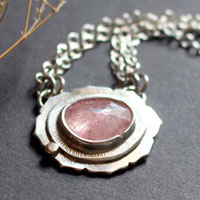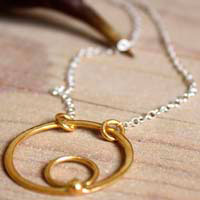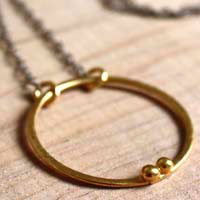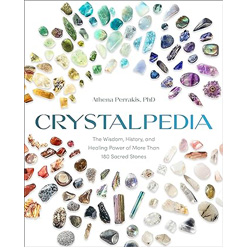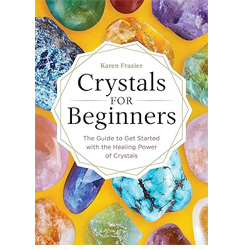- Jewelry
- Inspiration
- Our imagination
- Birthstones
- Celebrating with Eternal Flowers
- Druids and druidesses
- Flower meanings
- History, archeology jewelry
- Illumination jewelry
- Japanese symbols
- Lithotherapy and stone choice
- Maya calendar jewelry
- Stone color symbolism
- Stones catalogue
- Wedding anniversaries
- Searches a theme on the site
- Good Deals
- Paintings
- About
- Contact
JEWELRY
- Anklet
- Bracelets
- Brooches
- Cufflinks
- Earrings
- Pendants & Necklaces
- Rings
- Draw your jewelry
- GOOD DEALS
- How to clean your jewel
- Metal we used
INSPIRATION
- Our imagination
- Birthstones
- Celebrating with Eternal Flowers
- Druids and druidesses
- Flower meanings
- History, archeology jewelry
- Japanese symbols
- Lithotherapy and stone choice
- Illumination jewelry
- Maya calendar jewelry
- Stone color symbolism
- Stones Catalogue
- Wedding anniversaries
- Searches a theme on the site

Gold: history and healing properties

Gold properties

Gold, the quintessential precious metal, has embodied the essence of wealth and nobility for millennia.
Naturally present in our environment, gold is relatively easy to extract thanks to its stable chemical structure, particularly its atomic configuration, which grants it exceptional resistance to corrosion. This unique material boasts unparalleled malleability and ductility, offering unmatched versatility in both the arts and industry. Its extraordinary malleability allows gold to be transformed into a multitude of forms, from the thinnest sheets to intricate pieces of jewelry.
Resistant to oxidation, gold retains its eternal brilliance, defying time and the elements. This resistance stems from its atomic structure, which prevents easy reactions with oxygen in the air, unlike many other metals. Fascinatingly, gold can be hammered into a sheet just one micrometer thick over a square meter from a single gram, symbolizing the pinnacle of craftsmanship and precision. This process, known as gilding or lamination, reveals the almost ethereal fineness of this metal and its nearly indestructible nature.
Beyond its intrinsic rarity, gold enchants with its radiant yellow hue, evoking the majesty of the sun and the warmth of its rays. This luminous color has captivated humanity across the ages, earning gold a prominent role in religious rituals and beliefs worldwide, where it is revered as a sacred symbol, an embodiment of divinity itself. In some cultures, gold has also been regarded as a metaphor for eternity, immortality, and spiritual enlightenment—concepts deeply rooted in religious practices and ancient mythologies.
Its french name, "argent" derives from the Latin word "Aurum," meaning "dawn" or "golden light," highlighting its connection to celestial light and the promise of a new day. This symbolic link between gold and natural light is reflected in its use in sacred arts, particularly in the creation of icons and sculptures dedicated to deities and spiritual figures. Gold’s chemical symbol, "Au," preserves this etymological heritage, rich in metaphorical meanings, symbolizing not only light but also purity and transcendence.
In English, the word "gold" traces its roots to the Indo-European term "ghelh," meaning "to shine, to be yellow or green," evoking its brilliant luster and the yellow or greenish hues associated with this precious metal. In Proto-Germanic, this root evolved into "gulpa," perpetuating humanity’s fascination with gold across civilizations and eras. This linguistic journey reflects the emphasis on gold’s visual appeal, its ability to capture and reflect light—a fundamental quality that has cemented its position as a sacred metal.
Gold’s origins are celestial, with ancient stars scattering this precious metal across Earth as a heavenly gift of immeasurable value. According to astrophysical theory, gold was formed in supernovas—cataclysmic stellar explosions—before being dispersed through space and reaching Earth via meteorites. This cosmic connection reinforces gold’s mythological aura, elevating it beyond mere terrestrial matter to a celestial treasure, a mark of cosmic forces intertwined with human existence.
The enduring fascination with gold has captivated humanity through the ages, inspiring epic tales imbued with its dazzling allure. Its history, as rich as it is complex, spans millennia of conquests, discoveries, and daring exploits, weaving a saga of humanity’s deepest passions. From ancient civilizations such as the Egyptians and the Mayans to modern societies, gold has carved its path through the annals of history, symbolizing wealth, power, and even the eternal quest for immortality. The exploration of its cosmic origins, rarity, and brilliance has given rise to a complex and enduring mythology. In this brief exploration, we will glimpse some of the pivotal milestones that have shaped gold’s journey through time.
Gold use
Gold has long been revered as an invaluable store of wealth, making it one of the primary forms of hoarding across the ages. Central banks worldwide hold significant reserves of gold, not only as a guarantor of monetary stability but also as a safeguard against economic fluctuations and financial crises. This role has endured for centuries, with gold often serving as the foundation of international monetary systems, such as the gold standard, which structured the global economy until the 20th century. As a result, gold is perceived as a "safe haven" during times of economic uncertainty.
Nearly half of global gold demand is attributed to the jewelry industry and the production of various objects. In this world rich with creativity, gold is often combined with other precious or common metals to enhance its strength or to experiment with its radiant hue. This results in an infinite array of shades: white gold evokes timeless elegance, red and rose gold capture passion and romance, green gold reflects lush nature, gray gold symbolizes modernity, and blue gold conveys the serene depths of the ocean. These gold alloys not only offer diverse colors but also adapt the metal to the demands of each piece, especially in terms of durability and aesthetics. For instance, rose gold, which contains copper, is particularly cherished for its warm and intimate tone, while white gold, often alloyed with palladium, is sought after for its resemblance to platinum but at a more affordable cost.
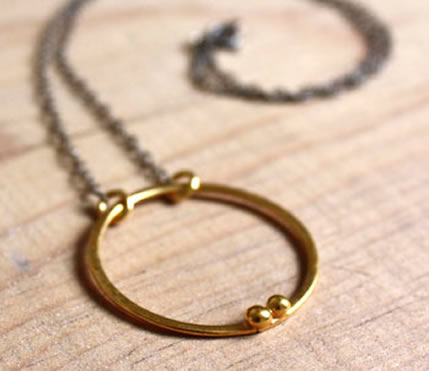
Gold, with its remarkable electrical conductivity and unparalleled resistance to corrosion, stands as an essential element in modern electronics. From integrated circuits to high-tech components, gold is ubiquitous, ensuring reliable and durable connections within the most sophisticated electronic devices. In smartphones, computers, and even satellites, gold is utilized to maintain the performance of these devices by ensuring the quality of electrical signals while withstanding the extreme conditions of technological environments.
In dentistry, gold also excels due to its exceptional properties. Its resistance to oxidation makes it a preferred material for crafting durable and biocompatible dental prosthetics. Used in dental restorations and crowns, gold provides a proven solution for restoring both functionality and aesthetics to teeth, offering patients long-lasting comfort and durability. Furthermore, gold’s biocompatibility minimizes the risk of rejection or irritation, making it particularly well-suited for long-term dental treatments.
Gold’s ability to reflect electromagnetic radiation—including visible light, infrared, and radio waves—makes it a valuable material for protecting sensitive equipment. From satellites to astronaut spacesuits and even certain military aircraft, gold serves as an effective shield against the harshness of space and hostile environments, ensuring the safety and functionality of cutting-edge equipment. This application in radiation protection has been pivotal in the aerospace sector, where gold is applied as thin films on satellite windows to shield instruments from intense heat and radiation.
Moreover, gold also finds its place in the culinary world, where it is designated as E175. In various forms such as delicate leaves, shimmering flakes, or even gold dust, it adds a touch of luxury and exclusivity to diverse gastronomic creations and refined beverages. Often used to decorate fine dishes or elaborate cocktails, gold provides a unique aesthetic dimension and a touch of magic to the culinary experience, dazzling both the senses and the palate. Edible gold, completely inert from a digestive perspective, is used to enhance exceptional dishes, particularly in high-end pastries, as well as certain beverages like champagne-based cocktails, where it symbolizes sophistication and exclusivity.
Gold also plays a significant role in the medical field, offering valuable solutions for treating various conditions, notably rheumatoid arthritis, an autoimmune disease that affects the joints. In this context, gold salts, in specific compound forms, have been used for decades to reduce inflammation and slow disease progression. The anti-inflammatory properties of gold help alleviate pain and improve mobility for patients suffering from arthritis, thereby enhancing their quality of life. While these treatments have become less common with the advent of newer medications, they are still utilized in cases where other therapies prove ineffective.
Furthermore, medical research continues to explore innovative applications for gold in the healthcare sector, particularly in nanotechnology and medical imaging. Gold nanoparticles hold great promise for precisely targeting cancer cells or delivering drugs directly to affected areas, paving the way for more effective and less invasive treatments for a wide range of diseases. Additionally, gold’s unique properties in contrast and conductivity make it a valuable tool in medical imaging, facilitating early diagnosis and disease monitoring with increased precision. For instance, gold nanoparticles are employed in radiotherapy to focus radiation directly on cancerous tumors, thereby enhancing treatment efficacy while minimizing side effects on healthy tissues.
Mines: China, Australia, South Africa, the USA, Russia and Peru.
History, legends and beliefs about gold
Gold, a true treasure of humanity, represents one of humankind’s earliest pursuits of metallic perfection. After copper, it was the second metal discovered by humans, dating back to the dawn of civilization and heralding the beginning of a new era in technological evolution. Since the Chalcolithic period, when the fusion of copper and gold paved the way for unprecedented metallurgical achievements, gold has sparkled in the skilled hands of artisans and blacksmiths, becoming the ultimate symbol of wealth and prestige.
Long before gold was fashioned into ornaments or sacred objects, early human populations discovered this precious metal in the form of nuggets in riverbeds. These alluvial deposits, formed by the erosion of gold-bearing veins in mountains, were the primary sources of gold accessible to our ancestors. The brilliance and incorruptibility of gold quickly captivated early human groups, who saw in this metal a manifestation of the divine and the eternal.
The uneven distribution of gold deposits influenced the migration of prehistoric peoples, drawing them toward regions rich in natural resources. By following gold-bearing rivers, communities developed more complex social systems, fostering the rise of elites who controlled access to this rare metal. Gold, often used as a symbol of power, already played a central role in the organization of emerging societies.
Among the earliest tangible evidence of gold use, the oldest known gold artifact was unearthed in the prestigious necropolis of Varna, Bulgaria, dating to the late 5th millennium BCE. This remarkable archaeological collection includes more than 3,000 gold artifacts, weighing over 6 kilograms, including jewelry and ornaments, showcasing impressive craftsmanship and the symbolic importance of gold in funerary rites. This treasure reflects a hierarchical society where gold played a central role in expressing power, prestige, and spiritual beliefs.
Since ancient times, gold has been revered as the metal of the gods, intimately linked to the radiant image of the sun. This fascination crystallized among the Egyptians, for whom gold was far more than mere adornment. It was venerated as the very flesh of the gods, particularly the powerful Ra, the sun god, and was regarded as the ultimate symbol of eternity and divinity. Funerary texts, such as the Book of the Dead, often reference gold as a central element in the journey to the afterlife, ensuring immortality for the deceased.
The importance of gold in ancient Egyptian society shines vividly through the lavish treasures discovered in the tombs of pharaohs, bearing witness to their power and grandeur. The famous treasure of Tutankhamun’s tomb, estimated to contain over a ton of pure gold, remains an iconic example of this legendary opulence. The young king’s funerary mask alone, weighing 11 kilograms, embodies the unmatched majesty and wealth of the pharaohs of ancient Egypt. Beyond its material value, gold served as a powerful talisman, guaranteeing divine protection and access to eternal life.
The scarcity of gold drove the Egyptians to undertake bold and often perilous quests to acquire it. The deserts of Nubia, known then as the "Land of Gold," were a major source of this precious metal. Inscriptions in quarries, such as those at Wadi Hammamat, provide evidence of these epic expeditions, often orchestrated by royal authority and involving hundreds of laborers. These ventures, though dangerous, were deemed essential to ensure the prosperity and glory of the kingdom.
Moreover, the Egyptians were among the first to explore the medicinal uses of gold over 5,000 years ago. Believing in its purifying properties for both mind and body, they regularly consumed gold-based elixirs, convinced that these would promote optimal physical and mental health while enhancing beauty and rejuvenating the body. Gold was also utilized in dental care, with gold wires employed to secure artificial teeth, showcasing a remarkable understanding of its unique properties and health benefits.
In Egyptian art, gold was also used to adorn statues of gods and sanctuaries, symbolizing their divine nature. Temples, such as those at Karnak and Luxor, were sometimes decorated with gold leaf to reflect sunlight and glorify the deities. Thus, gold represented far more than a mere precious metal in the millennia-long history of ancient Egypt: it symbolized the pursuit of divinity, splendor, and immortality.
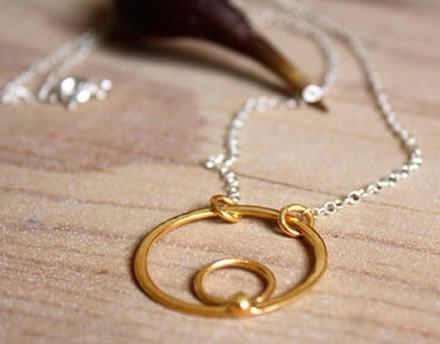
The creation of the first gold coin in Lydia, between the 8th and 6th centuries BCE, marks a pivotal moment in the economic and social history of humanity. Made from a precious alloy of gold and silver known as electrum, this revolutionary coinage was often stamped with symbolic motifs, such as a majestic lion’s head, embodying strength and royal power. This innovative monetary system represents a shift in the use of gold from primarily religious or ornamental purposes to widespread civic applications, ushering in a new era where this precious metal became a cornerstone of commercial exchange.
The influence of this practice quickly spread beyond Lydian borders, radiating into Persia, Greece, and across the ancient Mediterranean world. The use of gold coins not only facilitated trade but also strengthened administration and centralized authority. By adopting these coins, states enhanced their economic and political cohesion, while showcasing the technical mastery of Lydian goldsmiths, renowned for their expertise in minting.
Among the prominent figures of this golden age, Croesus, the last king of Lydia, stands out as a dazzling symbol of wealth and generosity. His legend is closely tied to the Pactolus River, famed for its gold-rich sands. According to myth, this river gained its wealth when King Midas washed away the curse of his "golden touch" in its waters. This mythological connection enhances the mystical allure of Croesus’s fortune, which remains unparalleled. Croesus used his immense wealth to assert his prestige and devotion, financing monumental works and lavish offerings. The reconstruction of the Temple of Artemis at Ephesus, one of the Seven Wonders of the Ancient World, exemplifies his commitment to religious patronage. According to Herodotus, he also made enormous donations to the sanctuary at Delphi, including bricks of pure gold, golden cups and beds, and a massive golden lion weighing approximately 250 kilograms. These offerings aimed to strengthen diplomatic and spiritual ties between kingdoms while glorifying his reign and prosperity.
The introduction of gold coinage in Lydia under Croesus not only transformed economic practices but also left a lasting legacy in history. This monetary system influenced neighboring cultures, particularly the Greeks, who refined minting techniques to make coinage a cornerstone of their economy. Croesus is remembered not only for his legendary wealth but also for his significant contributions to the development of ancient economic structures.
In ancient Greece, gold held a prominent place in cultural and spiritual practices, symbolizing wealth, divinity, and the connection between earthly life and the afterlife. This fascination was poignantly expressed through funeral rituals rich in symbolism. The Greeks, firmly believing in an existence after death, often placed a coin, typically gold or silver, in the mouths of the deceased. This "toll" was intended for Charon, the ferryman of the Underworld, who transported souls across the waters of the Styx to the realm of Hades. This ritual not only reflected a deep belief in the immortality of the soul but also a perception of gold as a guarantee of safety and passage into the afterlife.
As early as the Mycenaean palace era, between the 16th and 12th centuries BCE, gold was among the most treasured items discovered in royal and aristocratic tombs. Mycenaean graves, particularly those in the famous Grave Circle A at Mycenae, revealed astonishing wealth: intricately crafted funerary masks, such as the renowned "Mask of Agamemnon," finely engraved cups, radiant diadems, and sophisticated jewelry. These magnificent artifacts were both symbols of power and offerings meant to accompany the deceased into the next world, reflecting the importance of gold in funerary beliefs and social status.
Gold also occupied a central role in Greek mythology, weaving captivating tales that continue to fascinate. The epic of the Argonauts, led by Jason in search of the Golden Fleece, is one of the most iconic stories of antiquity. The fleece, according to legend, symbolized far more than a mere treasure; it represented power, prosperity, and divine authority. Modern research suggests that the Golden Fleece may have referred to a real technique used in the Black Sea regions, where locals placed sheep skins in rivers to trap gold particles carried by the water—a practice described by the Greek geographer Strabo.
Another well-known myth, that of King Midas of Phrygia, illustrates the dangers of greed and obsession with gold. Around 800 BCE, Midas, in his desire for infinite wealth, was granted by Dionysus the ability to turn everything he touched into gold. This power, initially perceived as a blessing, quickly became an unbearable curse, as even food and loved ones were transformed into precious metal. To rid himself of this curse, Midas was guided by Dionysus to the Pactolus River, where he purified himself, leaving the waters rich with gold deposits. This myth not only highlights the perils of human greed but also links geological phenomena, such as the presence of gold in riverbeds, to divine narratives.
Through myths, rituals, and craftsmanship, gold in ancient Greece was far more than a mere precious metal: it embodied spiritual and material aspirations, serving as a bridge between the divine and the earthly. These stories and practices continue to provide a unique glimpse into the values, beliefs, and technical achievements of this remarkable civilization.
Gold held an irresistible allure for the Romans, embodying wealth, power, and dominance in an ever-expanding Roman Empire. This precious metal was not merely a symbol of personal prosperity but also a central pillar of the Roman economy, supporting military campaigns, monumental constructions, and the ostentatious luxury of the elite.
Among the most emblematic figures of Rome’s obsession with gold was the consul Marcus Licinius Crassus, renowned for his immense fortune and insatiable quest for wealth. Crassus, often regarded as the wealthiest man of his time, amassed a colossal fortune through methods that reflected both financial ingenuity and a lack of scruples. He invested heavily in real estate, purchasing properties damaged by fire at rock-bottom prices, and even developed a private firefighting brigade that would only intervene if the property owner agreed to sell at a reduced cost.
Despite his unparalleled wealth, Crassus yearned for military glory to rival his contemporaries Pompey and Caesar. This ambition led him to embark on a campaign against the Parthians, one of the most formidable Eastern powers of the time. However, this expedition ended disastrously at the Battle of Carrhae in 53 BCE, where Crassus was captured by the Parthian king Surena. According to a legend recounted by ancient chroniclers, Surena, as a punishment for Crassus’s insatiable greed, ordered molten gold to be poured down his throat, sealing the tragic fate of a man whose pursuit of wealth ultimately consumed him.
This unquenchable thirst for gold was also sharply criticized by Pliny the Elder, a Roman writer and naturalist of the 1st century CE. In his monumental work Naturalis Historia, Pliny described gold as "man’s first folly," closely followed by silver. He regarded this relentless quest for gold as a form of moral corruption, reflecting humanity’s vanity and weakness in the face of material temptations. Pliny’s observations underscore the inherent paradox of gold: a universal object of desire that also served as a source of conflict, greed, and despair.
Beyond legendary figures and philosophical critiques, gold played a pivotal role in Roman society. Gold coins, such as the aureus, were the cornerstone of commerce and a potent symbol of the Empire’s might. These coins, often struck with the likeness of emperors, reinforced their divine authority and control over the economy. Additionally, gold adorned the luxurious villas of the elite, temples dedicated to the gods, and triumphal processions celebrating military victories.
Roman gold was sourced from various regions, including the mines of Hispania and Dacia, as well as from the spoils of conquered territories. These constant inflows of precious metal fueled Rome’s opulence but also exacerbated social inequalities and political tensions.
The Roman history of gold, as reflected in figures like Crassus and the insights of Pliny, reveals the multifaceted nature of this coveted metal: a symbol of power and prosperity, yet also a mirror of human excess and vulnerability. This legacy continues to resonate today, reminding us of the enduring ambivalence surrounding gold in human history.
From the Middle Ages onward, alchemy—a discipline at the crossroads of science, philosophy, and spirituality—captivated the minds of the most daring seekers. Alchemists, fascinated by the idea of transforming base metals like lead or mercury into pure gold, devoted their lives to the pursuit of the philosopher’s stone, a legendary substance said to perform this miraculous feat. This quest was not limited to material ambitions; it also embodied a spiritual journey aimed at achieving inner perfection and understanding the mysteries of the universe.
In their intricate iconography, gold was often symbolized by a point surrounded by a circle, representing absolute perfection and the ultimate goal of alchemical achievement. This pursuit of transcendental gold was part of a sophisticated symbolic system, where each stage of the alchemical process—from nigredo (blackening or putrefaction) to rubedo (reddening)—reflected a spiritual transformation mirroring the material work.
Iconic figures such as Albertus Magnus and Nicolas Flamel became emblematic of an era where nascent science and mystical beliefs coexisted. Although the alchemists’ material goal of producing gold was never realized, their work laid the groundwork for many later chemical discoveries.
Alongside alchemy’s mysteries, gold held a prominent place in medieval medicine. Its dazzling purity and rarity made it a precious material not only for jewelry and ornaments but also for therapeutic applications. In medieval thought, gold, as a perfect metal, was believed to possess intrinsic health benefits.
Physicians of the time, influenced by Greek and Arabic traditions, believed that gold could purify the body and strengthen the organs. In powdered form or as part of elixirs, it was incorporated into remedies purported to cure a wide range of ailments, from heart disorders to mood imbalances. These preparations, often expensive, were reserved for the elite, adding an aura of prestige to their use.
Medical texts, such as those by Avicenna and Arnold of Villanova, mentioned the curative properties of gold, including its inclusion in potions said to prolong life or restore vitality. These practices reflected not only a fascination with the metal’s beauty and rarity but also a deep-seated belief in its ability to transmit its perfection to the human body.
The impact of gold during the Middle Ages, whether in alchemy or medicine, extended far beyond its material role. It symbolized humanity’s aspiration to transcend its limitations, whether by achieving spiritual elevation or overcoming physical frailty. These pursuits, though often unsuccessful in their immediate objectives, left a lasting legacy in the fields of science, philosophy, and art, bearing witness to the timeless fascination gold holds over humanity.
The funeral rituals of the Germanic peoples revealed a deep attachment to gold, a metal perceived not only as a symbol of earthly wealth but also as a connection to the divine and eternity. The deceased were often buried with a piece of gold placed in their mouth, a practice reflecting the belief in an afterlife. This coin, sometimes called the "funeral obol," represented an offering intended to guide the deceased in their passage to the afterlife. It served as a tribute to the guardian of the other world, an idea present in other cultures, such as ancient Greece with Charon, but which found a unique expression in Germanic traditions.
Beyond funeral customs, gold occupied a central place in the legal and social systems of the Germanic peoples, playing a fundamental role in maintaining order and justice. The Wergeld, literally "man price," was a compensation demanded to repair wrongs caused by serious crimes, such as murder or acts of violence. The amount of Wergeld, often paid in gold or silver, varied depending on the social status of the victim. For example, the value of a noble was far higher than that of a freeman or a slave, reflecting a deeply rooted hierarchy in society.
This compensation system primarily aimed to prevent vendettas and cycles of revenge by allowing the families of victims to receive some form of material reparation. Gold, as a precious metal, served here as a mediator, embodying both justice and balance. The Wergeld not only compensated the grieving families but also helped restore harmony within the community, underscoring the importance of gold as a guarantor of social stability.
The significance of gold among the Germanic peoples went beyond these practical uses. As an incorruptible and eternal metal, it was also associated with divine power and the protection of chiefs and warriors. Artifacts such as torcs, belt buckles, and funeral crowns, often crafted with great finesse, testify to this sacred perception of gold.
In royal tombs discovered in Scandinavia and Central Europe, such as those of the Lombard or Frankish cultures, extraordinary gold objects have been uncovered. These treasures not only reflect the material prosperity of these peoples but also a deep belief that gold could accompany the dead into the afterlife, ensuring their status and eternal protection.
The Vikings, famous for their fearsome maritime raids and expansion across Europe, developed a shrewd political strategy, notably with the establishment of the Danegeld. Literally "the gold of the Danes," this tax imposed on the subjected territories was designed to prevent constant attacks from these formidable warriors. The Danegeld was not merely a fiscal demand but also a means of ensuring the safety of local populations in exchange for Viking protection. Introduced in the 8th century, this practice illustrates the use of gold as both a tool of coercion and a means of negotiation and power.
Subjugated peoples, often Anglo-Saxon kingdoms, preferred to offer substantial sums of gold rather than endure devastating raids. Gold thus became the instrument by which the Vikings imposed their will but also a means for other kingdoms to avoid mass destruction and maintain a temporary peace. It is fascinating to note that this gold tax was not limited to a mere material transaction. It was also a symbolic means of marking the submission of the conquered kingdoms and reinforcing the idea that wealth and prosperity were closely tied to the Viking presence.
The Danegeld also represents an evolution in the strategic use of gold, moving from mere wealth to a sophisticated political instrument. This tax was collected over several centuries and passed through different phases of medieval history, particularly in England, where it was seen as a tribute to be paid to avoid the destruction of lands and villages.
Finally, it is interesting to note that the gold used in this way by the Vikings symbolized much more than mere material wealth. It also embodied military power and the diplomatic negotiating capacity of a culture that knew how to combine brute force with diplomatic subtlety. Gold, in this sense, became a means of communication between kingdoms, a universal language of negotiation.
In the sacred texts of the Bible, gold occupies a prominent place, symbolizing both power, splendor, and divinity. Although some negative connotations appear, as in the episode of the golden calf (Exodus 32), where gold becomes the symbol of idolatry and distance from God, gold is nevertheless widely used to glorify the divine presence and sacred attributes. This precious object, as a rare and shining substance, becomes a means of representing the inaccessible and the infinite in the spiritual realm.
In Jewish worship, gold is abundantly used in the sacred objects of the Temple of Jerusalem. Artifacts such as the menorah, sacred cups, and the Ark of the Covenant (see Exodus 25:10-22) were decorated with gold, emphasizing the sanctity of these objects and their direct connection to the divine presence. In this context, gold is not merely a symbol of material wealth but a metaphor for purity, divine light, and perfection. These sacred objects, covered in pure gold, were meant to house the presence of God among men, making gold a medium between the celestial and the terrestrial.
In Catholic tradition, gold retains a similarly profound meaning. It symbolizes divine light and holiness. The term "halo," used to describe the glowing circle surrounding saints in religious iconography, derives from the Latin word auréola, literally meaning "gold." This association draws a powerful parallel between the golden glow and celestial glory, reinforcing the idea that holiness is a radiant divine light, almost material, bringing man closer to God. In this sense, gold becomes a metaphor for spiritual enlightenment.
In the New Testament, gold appears as a royal gift presented to Jesus by the Magi (Matthew 2:11), highlighting His divine status and spiritual authority. Gold, along with frankincense and myrrh, becomes a symbol of Jesus' heavenly kingship, a metal reserved for the greatest sovereigns. This act by the Magi marks humanity’s homage to the incarnate divinity, and gold embodies this royal recognition.
Finally, in the apocalyptic visions of Revelation, gold appears through powerful symbols. Christ appears to the Apostle John surrounded by seven golden lampstands, representing the seven Churches (Revelation 1:12-13). These golden lampstands symbolize God’s light and the continual presence of Christ among His Churches. An angel also pours incense from a golden censer (Revelation 8:3), symbolizing the purity and transcendence of the divine act. Here, gold becomes a means of expressing the grandeur of the divine, evoking an inaccessible transcendence, yet both present and illuminated, capable of purifying humanity through divine grace.
In China, gold carries a particularly profound symbolism, intimately linked to the fundamental principles of yin and yang, the cosmic duality that governs the universe. In this philosophy, gold embodies the yang element, symbolizing light, vitality, and solar power, while silver, the yin element, represents the moon, receptivity, and softness. This complementarity between gold and silver, between light and shadow, reflects the essential balance of the universe and is manifested in the daily life of the Chinese, where harmony between these two elements is crucial. Gold is thus often seen as a representation of the sky and active, dynamic, masculine forces, while silver, more discreet and sensitive, represents the earth and receptive, feminine energies.
This duality also permeates marriage traditions and family celebrations, where gold plays a fundamental role. In wedding ceremonies, gold is a major gift, often presented in jewelry and other ornaments, such as necklaces, rings, and bracelets. It is not only valued for its beauty but also for its ability to convey wishes of prosperity, longevity, and happiness to the newlyweds. Chinese women traditionally wear high-quality gold, often 24-carat or more, to symbolize the purity and immutability of marriage vows, while also reflecting the stability and eternity of the union. This gesture is also a pledge of lasting happiness and a symbolic remedy against bad luck, a practice deeply rooted in popular beliefs and Confucian traditions.
Furthermore, gold in Chinese culture is also linked to luck and spiritual wealth. For example, gold coins or gold ingots were frequently used during the Chinese New Year celebrations to invite prosperity and ward off misfortune. The dragon and phoenix, two powerful mythological creatures in Chinese culture, are often depicted in gold, representing the protective forces of nature and the blessings of ancestors.
In traditional Chinese medicine, gold is also regarded as an element with healing properties, used in certain medicinal treatments and in the preparation of remedies to strengthen vital energy (qi). It is believed to balance the body’s energies and accelerate healing by enhancing vital energy.
In Buddhism, gold holds a profound symbolic meaning, associated with purity, spiritual transcendence, and divine light. Gold is perceived as a highly sacred metal, reflecting the light and brilliance of enlightenment. It embodies the perfect beauty of the Buddhist teachings and the aspiration to attain nirvana, the state of supreme peace and spiritual awakening. In this context, gold is often used to cover statues and representations of the Buddha, symbolizing divine influence and the perfection of the teachings.
A remarkable example is the Golden Buddha of Bangkok, an impressive statue that embodies the majesty of Buddhist art. This statue, over 3 meters tall and weighing nearly 5.5 tons, is a masterpiece sculpted from solid gold. It represents one of the largest and most magnificent incarnations of the Buddha in the world. Its colossal size and golden glow reinforce the idea that the Buddha embodies infinite wisdom and the light that guides beings toward enlightenment.
The Golden Buddha of Bangkok is an object of veneration for thousands of devotees and visitors each year. During their pilgrimage, practitioners visit the temple to pray, meditate, and seek divine blessings. The aura of peace and serenity emanating from the statue invites believers to inner reflection, spiritual elevation, and the quest for detachment from material desires.
The use of gold in Buddha statues is not only aesthetic but also represents a way of honoring Buddhist teachings. Gold, as a material, symbolizes the spiritual transformation of the metal, just as practitioners aspire to inner transformation, purification from ignorance, and the attainment of awakening. In temples and stupas, gold offerings or gold-plated coins are often made by devotees in a symbolic act of renunciation of the ego and material wealth, aiming to cultivate inner light.
In Hinduism, gold is intrinsically linked to the goddess Lakshmi, worshiped as the embodiment of wealth, prosperity, abundance, and fertility. Lakshmi is often depicted with gold coins flowing from her delicate hands, symbolizing divine generosity and the infinite prosperity she grants to her devotees. She is also sometimes depicted sitting on a lotus, a symbol of purity and renewal, wearing gold jewelry and surrounded by lotus flowers, highlighting the purity and fertility brought by both spiritual and material wealth.
Gold, in this context, is not merely a precious metal but a physical manifestation of divine goodness. It represents the creative energy of Lakshmi, who blesses her worshipers by offering them luck, success, and inner wealth. Gold is seen as a source of fortune, and its brilliance evokes the divine light that dispels the darkness of the material world. It is also associated with immortality and eternity, qualities embodied by the goddess, and her presence guarantees a life full of spiritual fulfillment and success.
Every year, during the festival of Dhanteras, a major event in the Hindu calendar, devotees honor Lakshmi by purchasing gold objects, jewelry, and precious coins, hoping that this practice will attract prosperity and protect their homes from misfortune. This day is also marked by prayers and offerings made to the goddess, often in temples decorated with gold, further reinforcing the sacred nature of this metal in the worship of Lakshmi.
During this time, people organize special ceremonies where gold is offered not only as a symbol of material fortune but also as a representation of the divine light brought by Lakshmi. By wearing gold ornaments, devotees commit to honoring the goddess and manifesting their faith in her ability to transform their lives. Temples and homes are decorated with golden objects, and devotees scatter gold coins and banknotes on Lakshmi’s altars to express their gratitude and desire for spiritual elevation.
The insatiable quest for gold was one of the main driving forces behind the European conquest of the Americas. Europeans saw the precious metal not only as a symbol of wealth but also as a way to legitimize their power and imperial ambitions.
Hernán Cortés, the Spanish conquistador, launched the brutal conquest of the Aztec Empire in Mexico partly to seize the vast gold riches of Emperor Moctezuma. The Aztecs regarded gold as the "flesh of the gods," a divine substance, using it not only to adorn their palaces and temples but also in their religious rituals, offering golden objects to deities as symbols of their devotion. Once defeated, the Aztec treasures, composed largely of gold and objects made of turquoise and jade, were sent to Spain to fund the wars and expansionist ambitions of the Spanish crown. Aztec gold, a symbol of power and deep spiritual beliefs, fueled a colonial frenzy and forever transformed the economies and societies of Europe.
From the early days of European colonization in the Americas, the legend of El Dorado, the mythical city of gold, captivated the imagination of explorers and adventurers, driving them further in their quest for wealth and fortune. This irrational pursuit, fueled by fabulous tales and inaccurate maps, led to endless expeditions into the unexplored lands of South America, particularly by Francisco Pizarro and other conquistadors in search of a mythical empire. Although the treasure was never found, the frantic search for El Dorado played a major role in opening up South American territories to European exploitation.
In the mid-19th century, the gold rush triggered the famous California Gold Rush, which began in 1848, spurring the conquest of the American West and attracting thousands of prospectors, fortune seekers, and settlers in search of their share of the precious metal. This gold rush profoundly transformed American society, encouraging migration westward, the founding of cities, and the development of new infrastructure, while also exacerbating conflicts with Indigenous peoples and minorities. It also reinforced the idea that gold was a primary driver of the American dream and the ideal of the "American Dream," a promise of quick wealth and opportunities.
For the Incas, gold was seen as the "sweat of the sun," symbolizing its brilliance and divine generosity. This precious metal was reserved for the gods and rulers, often used in sacred objects and statues honoring deities, as well as to decorate the Temple of the Sun in Cusco, the heart of their empire. The Incas believed that gold, as a gift from the sun, had a profound spiritual connection with the celestial world, acting as an intermediary between humans and the gods. As for silver, it was considered the "tears of the moon," evoking its soft and soothing light, and symbolized the feminine element, complementary to gold. While gold represented masculinity and solar power, silver was associated with femininity, the night, and the moon, elements that were complementary in the Incan cosmological view.
Gold, far more than just a precious metal, played a crucial role in global monetary history until relatively recently. Until 1973, it was widely used as currency, even being established as a standard for currencies from the 1870s, first in England and then worldwide. The gold standard system, in which currencies were directly convertible into gold, ensured the stability of monetary values by linking the available money supply to a fixed amount of gold. However, the decline of this monetary use began with World War I, the economic consequences of which weakened the gold-based system. Hyperinflation and the financial needs of the warring nations forced several countries to suspend the convertibility of their currencies into gold, gradually abandoning the gold standard in favor of a system based on the U.S. dollar, which became the dominant currency in international transactions after the war.
In 1944, the Bretton Woods Conference marked an important turning point by establishing the dollar as the world reserve currency while maintaining its convertibility into gold, fixed at $35 an ounce. This system, which guaranteed a certain stability in international trade, was seriously tested with the increase in U.S. expenditures during the Vietnam War and the oil crisis of the 1970s. These economic tensions and the rise in the global money supply led President Richard Nixon, in 1971, to suspend the dollar’s convertibility into gold. Finally, in 1976, at the IMF conference in Kingston, the end of the Bretton Woods system was officially declared, bringing a definitive end to the convertibility of the dollar into gold and thus marking the end of gold’s last role in modern global economics. This change initiated an era of fiat currencies, whose value relies on market and government trust, rather than on a tangible resource.
In popular folklore, gold holds a special meaning, symbolizing 50 years of marriage in many cultures worldwide. This ancient tradition, called golden weddings, celebrates the fiftieth anniversary of marriage, representing the strength, durability, and richness of marital love over time. Gold, a precious and enduring metal, is the ultimate symbol of the longevity and constancy of a relationship, just as the brilliance of the metal remains untarnished by the years.
This tradition dates back to the Roman Empire, where gold crowns were given during marriage jubilees, marking a celebration of a lasting union. In medieval European culture, this tradition became formalized over time, with the fiftieth anniversary being associated with the value and rarity of gold, emphasizing the importance of commitment and loyalty.
In other cultures, gold can also symbolize prosperity and divine blessing. For example, in some Asian cultures, golden weddings are seen as a propitious moment to strengthen family and social ties, often marked by feasts and ceremonies where gold is given in the form of jewelry or precious gifts. Thus, gold becomes a tangible testament to mutual love and respect, a tribute to a shared life journey that has been enriched over the years.
Healing properties and benefits of gold
Gold, far more than just a precious metal, is associated with a multitude of health and wellness benefits. Since ancient times, it has been valued not only for its beauty but also for its therapeutic properties.
- Gold, with its purity and brilliance, is often associated with gemstones, not only for their visual beauty but also for amplifying their energetic and spiritual virtues. When combined with stones such as quartz, amethyst, or ruby, it is believed to enhance their ability to elevate the spirit and heal the body.
- On an energetic level, gold is reputed to support the nervous system by reducing stress and anxiety while promoting emotional balance. It is also thought to aid in better digestive functioning by stimulating the circulation of fluids and facilitating nutrient absorption.
- Gold is known for its effects on the hormonal system, particularly in regulating hormonal imbalances. In traditional medicine, it is credited with properties that help balance hormones, especially during menopause or adolescence.
- Gold promotes better blood circulation, supporting cardiovascular health. It is believed to dilate blood vessels and optimize oxygenation of the blood, thereby contributing to better heart function.
- In the field of joint and muscle pain, gold is used to relieve symptoms of arthritis. Its anti-inflammatory properties make it a highly sought-after natural remedy for reducing chronic pain and inflammation.
- Gold is also a preferred substance in dermatological care. In addition to protecting the skin from external aggressions and UV rays, it is considered a powerful ally against the signs of aging. It stimulates cell regeneration, helping to fade sunspots and making the skin more radiant.
- It is often used in traditional medicine to treat complex conditions such as autism, neurodegenerative disorders, and dyslexia, improving cognitive abilities and brain functions.
- Studies have suggested that gold may have beneficial effects on serious diseases such as tuberculosis, heart disease, and certain forms of cancer, by helping to strengthen the immune system.
- Gold is also used to strengthen vital organs such as the liver, kidneys, and bones. In Chinese and Ayurvedic medicine, it is often incorporated into treatments designed to eliminate toxins and purify the body, thus providing valuable support for overall vitality.
- Gold is frequently cited as a natural anti-aging agent. It is believed to help slow the effects of aging by acting as a cellular stimulant, preventing cell degradation and contributing to healthier longevity. It is also thought to have a protective role against free radicals, which are responsible for the premature aging of bodily tissues.
- Gold is particularly beneficial for harmonizing the heart chakra (Anahata), as it fosters unconditional love and compassion. By working on this chakra, gold may facilitate emotional healing, releasing emotional blockages and allowing individuals to open up to deeper and more genuine relationships. It also helps strengthen the capacity to both give and receive love.
- Gold is also closely linked to the crown chakra (Sahasrara), which represents the spiritual connection with the universe and divinity. Its energy amplifies spiritual consciousness, encourages the elevation of the soul, and promotes the search for wisdom. It stimulates deep meditation and openness to divine guidance, thereby facilitating spiritual awakening and self-awareness.
- In addition to its effect on the chakras, gold is also reputed to strengthen vital energy, or Chi, within the body. In Feng Shui, it is often used to attract prosperity and good fortune, while balancing energy in a space. This fosters a harmonious flow of vital energy, allowing the individual to feel revitalized and energized.
- Due to its strong vibration, gold is also considered an excellent means of balancing masculine and feminine energies within the body. It is seen as capable of reinforcing the solar, active, and creative aspect of the individual while nourishing receptivity, gentleness, and intuition. This energetic balance is essential for promoting inner harmony.
 Please note that all healing properties presented for gemstones are gathered from various sources. This information is provided as a service and is not intended to treat medical conditions. It is recommended to consult a healthcare professional for serious medical issues and not to rely solely on gemstones as a treatment.
Please note that all healing properties presented for gemstones are gathered from various sources. This information is provided as a service and is not intended to treat medical conditions. It is recommended to consult a healthcare professional for serious medical issues and not to rely solely on gemstones as a treatment.
Gold jewelry samples
To learn more about litotherapy, we recommend you the following books:

